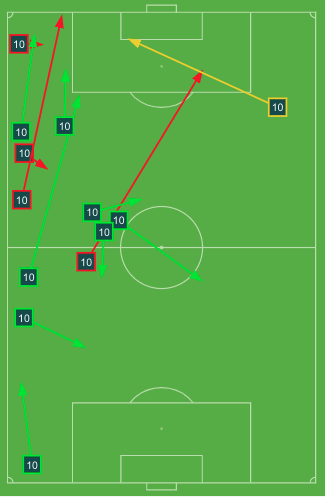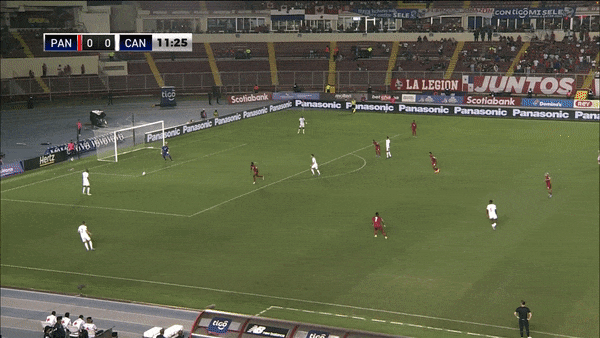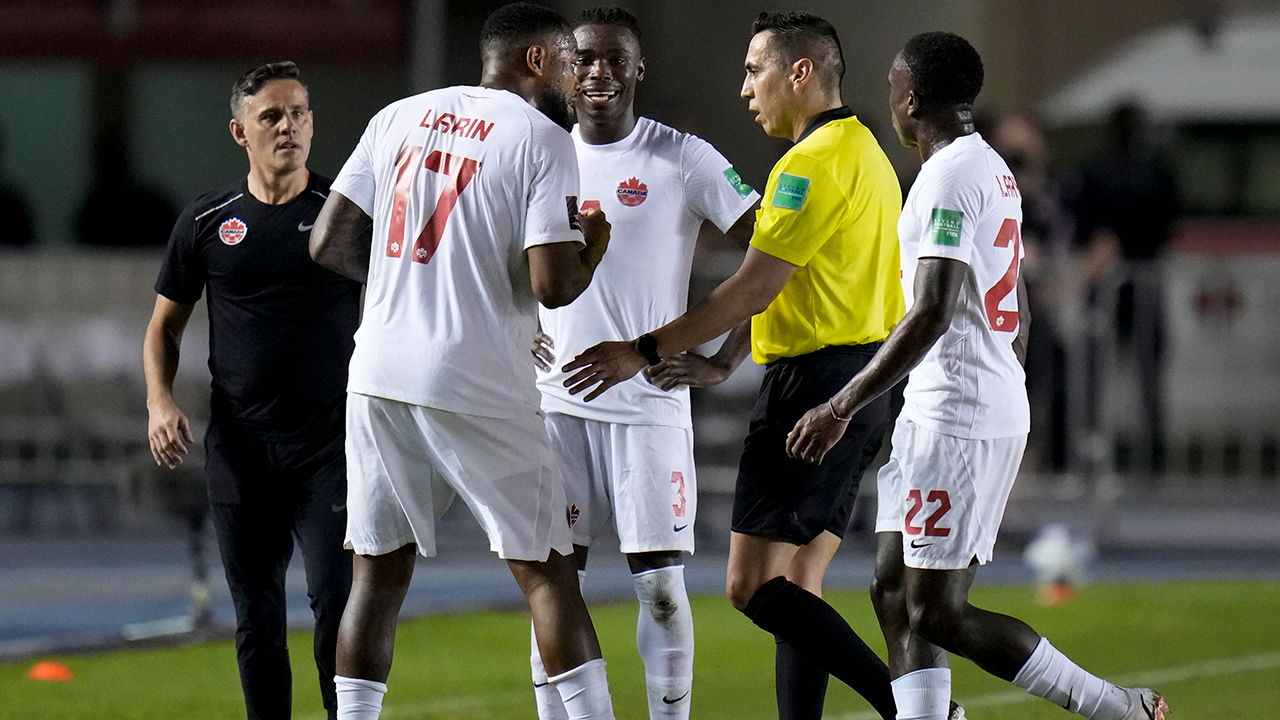
As wonderful as the Canadian men’s national team’s World Cup qualifying campaign has been, Wednesday’s finale was anything but.
Canada closed out qualifying with a 1-0 loss to Panama at Estadio Rommel Fernandez on Wednesday after one of its flattest performances of the final round.
There were a number of factors behind it. The quality of the pitch, the quick turnaround of games and the come-down from the euphoria of officially qualifying for the World Cup on Sunday being top of mind.
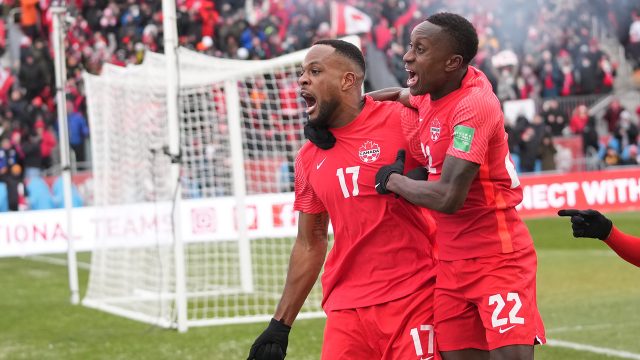
However, it’s not the first time in the octagonal phase that Canada was affected in this setting.
Here are three thoughts from Canada’s finale in World Cup qualifying:
Canada’s attack comes up empty
On Feb. 2, Canada had just completed a gruelling three-match window with nearly half the squad suffering from a lack of match fitness due to the MLS off-season.
Canada squeezing out three wins in that window showed tremendous effort and courage. But that Feb. 2 match in El Salvador was eerily similar to Wednesday night’s loss in a few ways.
Firstly, the persistent fouling from the hosts. The Salvadorans fouled Canadian players 17 times in that game. Prior to Atiba Hutchinson’s opening, Canada had nine shots and around 0.6 expected goals (xG).
Considering El Salvador boasted one of the best passes per defensive action (PPDA) rates in Concacaf entering that game, which is a solid metric to determine a team’s pressing intensity. That aggressiveness increased during home matches for the Salvadorans, so it was little surprise that Panama followed a similar blueprint.
:
1st in WCQ in defensive duels
1st in WCQ in fouls
2nd in WCQ in interceptions
3rd among Ocho teams in PPDA at 7.87 (only & are better)They’ve also conceded the most shots & are 2nd in xGA. There’ll be chances. Just have to bury them *cough* David *cough*.
— Peter Galindo (@GalindoPW) February 3, 2022
Panama had an 8.68 PPDA entering Wednesday, according to Wyscout. By comparison, Canada logged an 8.74 PPDA and it is a pretty aggressive team itself, ranking second in Concacaf in total fouls committed, narrowly ahead of the Panamanians.
The likes of Alistair Johnston, Atiba Hutchinson and Kamal Miller were generally calm when building from the back. But as soon as the ball found its way to the midfielders, they were immediately pressured and either fouled or gave up possession.
The Canadian pass map and Panamanian defensive actions at halftime told the story.
The first 20 minutes were subdued before a tactical switch from a 5-3-2 to a 3-4-1-2 in possession occurred. Canada just couldn’t bypass the Panamanians, which constantly forced the Canadians to play it back.
If Canada managed to enter the final third, Panama was shutting it down almost immediately through fouls or by disciplined positioning.
“I told the boys that I managed to glean quite a lot of information from the US’ experience down here and listening to Gregg Berhalter, his team had burnt themselves out in the first 20 minutes and it cost them the game and we weren’t going to do that,” said Canada coach John Herdman. “We wanted to make sure we finished stronger than Panama and that was the plan so we had players coming off the bench that we knew could change the game.
After halftime, Gabriel Torres opened the scoring for Panama but then substitutions were made for Canada. Top scorer Cyle Larin and winger Junior Hoilett checked in, with the latter assisting the former for the offside goal.
In fact, Hoilett – just as he showed in the Costa Rica match to start the window – was constantly finding pockets of space and progressing the ball into promising areas.
“When you look at [Panama’s] press, what they did tactically, they just took the bottom of [their]box away,” Herdman explained. “For periods, they were able to be more aggressive on the top of our box and from that, I just felt we weren’t quite on our game. We’ve had better performances.
“When you see the quality of Junior [Hoilett] coming in, Cyle Larin, that’s a game-changer for Canada, to have that quality coming off the bench. But you can’t start with those players because you’ve got to manage people, you’ve got to manage them physically and that’s part of tournament football.”
The difference from that El Salvador game to Wednesday’s match was clinical finishing. Hutchinson had two lucky bounces for his goal, then Jonathan David scored off a tremendous looping strike from distance. It was no less than what the Canadians deserved based on the quality of chances they created that night, though.
To Canada’s credit, nearly grinding out a result away in Panama – a traditionally tough venue to win in – with Hoilett, Larin, Richie Laryea, Jonathan Osorio. Unfortunately, Panama converted one of their three counter-attacks and Les Rouges couldn’t produce the same clinical finishing.
That will be the World Cup, though. Teams will be prepared tactically and have quality across the pitch. It will be up to Canada to manage those situations and convert when necessary. Let this and the Costa Rica defeat be lessons in that regard.
Kone struggles in full debut
In a show of confidence, John Herdman handed 19-year-old midfielder Ismael Kone his full debut for the national team on Wednesday.
Having logged eight appearances for club and country as a professional, Kone has already found himself playing in some hostile settings. He started against Cruz Azul at Estadio Azteca in the Concacaf Champions League, debuted for Canada at Estadio Nacional in Costa Rica and then picked up his first start in Panama.
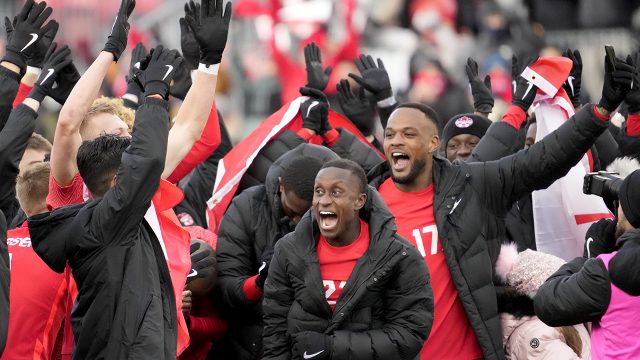
That’s an impressive hit list for a teenager with about 500 pro minutes.
However, as confident as he’s played early in his career, even when he’s started slowly and grew into the game, Kone struggled.
He also struggled against the fast-paced, aggressive high press of Cruz Azul at Estadio Azteca, albeit in altitude in a continental knockout tie. But the similarities were apparent, with Panama constantly harrying and fouling the youngster.
Kone lost possession seven times through loose touches, some due to the patchy playing surface and others by his inconsistency when playing with the ball under pressure.
Eventually, that led to Kone giving away possession in a dangerous area.
Kone eventually shifted into a more advanced position after 20 minutes when Canada changed to a 3-4-1-2 from a flat midfield trio. That allowed the teenager to dictate the game further forward, away from Panama’s line of engagement in the Canadian defensive third.
Considering Kone came through the CF Montreal academy as a winger or No. 10, it plays to his strengths. He had one glorious opportunity to feed Jonathan David but hesitated and didn’t hit the right pass.
Kone was withdrawn at halftime and replaced by Jonathan Osorio after a tepid 45 minutes.
These performances are inevitable for any youngster, especially one as inexperienced as Kone. The important factor is how he responds to this and grows as a player from here.
Plus, there is a bigger picture, one that involves sending as many Canadian players to the highest levels of the sport to gain more “Tier 1” players in the top European leagues.
“That’s what we’ve been pushing,” Herdman explained. “Trying to give young Ismael Kone tonight some opportunities, trying to springboard those players with these experiences, so we can push more players into those competitive environments where they are getting Champions League experiences.”
Even before his call-up this month, Kone’s areas of improvement involved his touch when receiving passes, specifically under pressure, and producing incisive decision-making on the regular. Match repetition should iron those out.
Hutchinson to stay at centre-back?
Another revelation in this window is Atiba Hutchinson starting two games at centre-back for the first time since 2019.
While he was flawless against Costa Rica, and looked calm when building from back versus Panama, Wednesday’s game might’ve exposed his Achilles’ heel.
Hutchinson’s abilities on the ball and the calmness he exudes are unmatched on the national team. However, at 39, he has lost a step and when Panama hit Canada in transition in the second half, that lack of foot speed nearly led to another goal or two.
Thankfully for Canada, it was Alistair Johnston to the rescue.
Hutchinson can be effective when building from the back as a centre-back. His passing accuracy and composure under pressure against Panama’s high press was very handy. The midfielders just couldn’t penetrate the ball further.
When Hutchinson is forced to sprint back and cover tons of open space on the counter, that’s not ideal for Canada.
This is where the pros and cons have to be weighed, not to mention tactical discipline. If Hutchinson continues at centre-back, there needs to be proper cover around to him to mask his weakness and to allow his qualities to shine through.





